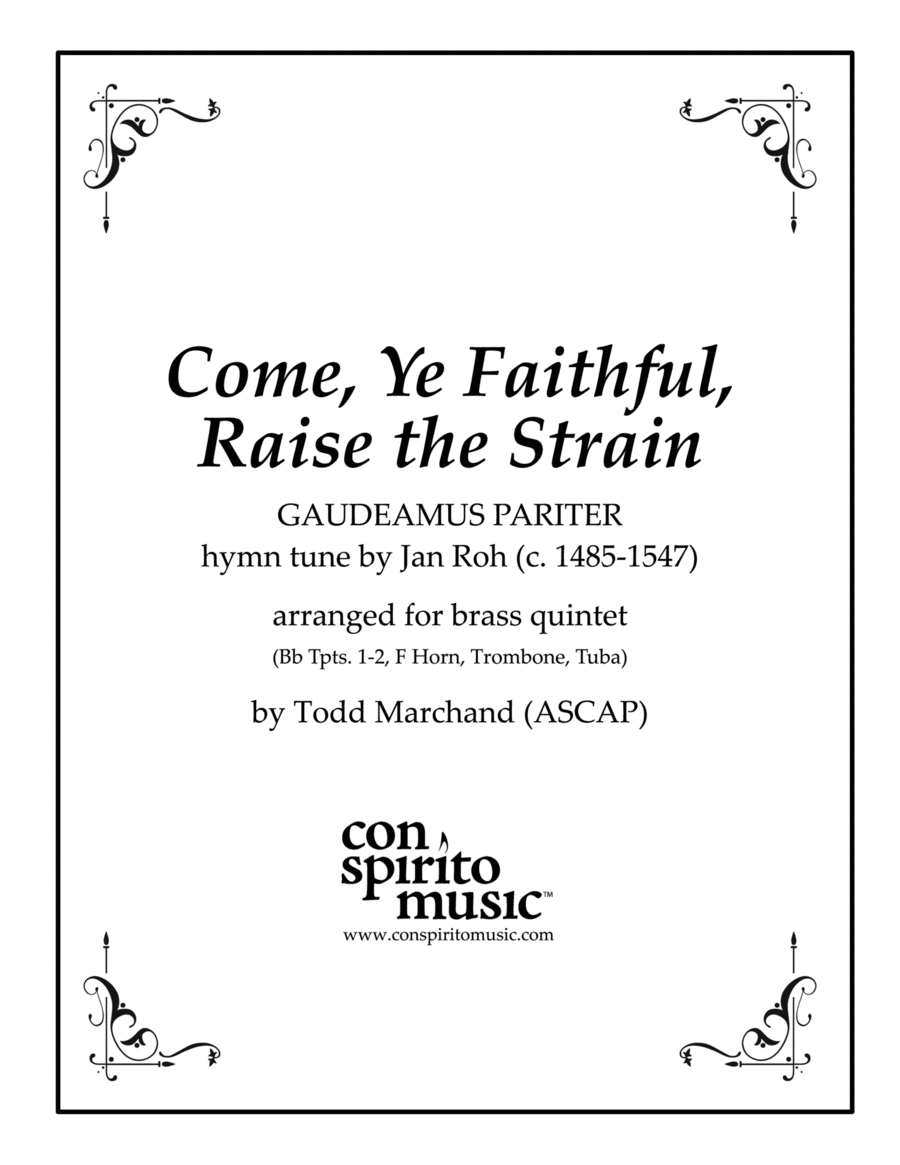Brass Ensemble Horn,Trombone,Trumpet,Tuba - Level 4 - Digital Download SKU: A0.726098 Composed by Jan Roh. Arranged by Todd Marchand. Christian,Easter,Sacred. Score and parts. 17 pages. Con Spirito Music #5374805. Published by Con Spirito Music (A0.726098). Come, Ye Faithful, Raise the Strain is a resurrection hymn-text authored by the Byzantine priest, theologian, and poet, St. John of Damascus (c. 675-754). He is counted among the Fathers of the Eastern Orthodox Church and is regarded by the Roman Catholic Church as one the Doctors of the Church. The English translation of the hymn was completed by the Anglican priest, scholar, and hymn-writer John Mason Neale (1818-1866) and published in his Hymns of the Eastern Church (1862).  Come, Ye Faithful, Raise the Strain is typically sung to either of two hymn tunes: ST. KEVIN, by the English composer Sir Arthur Sullivan (1842-1900), and GAUDEAMUS PARITER, by the Bohemian bishop, hymn writer and composer Jan Roh (c. 1487-1547). The latter tune is the basis for this arrangement. With introductory and concluding fanfares, exposition of the tune in various instrumental combinations and harmonizations, and rich, powerful sonorities throughout, it is ideal as a prelude or postlude to Easter worship, or for use at any time. ©Copyright 2020 Todd Marchand / Con Spirito Music (ASCAP). All rights reserved. Visit www.conspiritomusic.com
